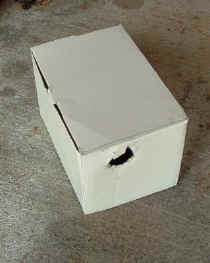

Dominic Vautier
6/2009
Carbon monoxide (CO) is a real quiet killer. In fact it kills lots of people every year. It's a nasty colorless, odorless, tasteless, and non-irritating byproduct of incomplete hydrocarbon combustion. Carbon monoxide cuts off the oxygen supply to the brain, causing carbon monoxide intoxication. CO intoxication occurs in only a few minutes, leaving those poisoned incapable of realizing they are poisoned, and unable to protect themselves. It is often caused by the incomplete combustion of natural gas, like when the normal airflow to your furnace or hot water heater becomes restricted. Entire families have been wiped out.
CO sensors are not very expensive and can be gotten at your friendly hardware store. Recently I got one of those carbon monoxide sensors and took it apart. It has a not of computer intelligence builtin. My first and most basic question however was how do I test it, I mean really test it. Sure you could push the little button and do the self test stuff, but that only tests the battery and the squealer--not a very good test. I asked my local utility guy and they don't test the things at all, nor can they be sure they work. The utility guys will only come out with a sniffer to see if you have any CO around your furnace or water heater, and that's all they will do--not a great deal of consolation. So what good is a CO sensor if you don't know if it works or unable to test it? My utility area (washer, gas dryer, gas furnace, gas water heater) is well ventilated and serviced regularly. However I really can't rest easily if I have a CO sensor and can't really test the thing to know of it works.
I do have heat sensors and particulate matter sensors all over my house. These are easy to test. Just take a match to the heat sensors and some burning paper to the particulate sensors and wait for them to squawk. Then you know they really work. Better yet, wait for the kids to burn a pizza then I squawk too.
So to correctly test a carbon monoxide sensor is to get hold of some carbon monoxide. Right---just go down to the shopping mall and pick up a jar of CO at the grocery store to test your CO sensor. Hmmm--, wait a minute! There's CO right outside in the driveway.
When car engines first start, they run rich and the catalytic converter is cold and not converting carbon monoxide to carbon dioxide. So at these rich concentrations, such as produced in the exhaust of a cold engine you will get enough carbon monoxide to test your sensor, believe me.
Get a small cardboard box, like a shoe box. It needs to have a hole in one side to fit over the car exhaust pipe. Place your CO sensor in the box, put the box on the tailpipe of your cold car, and run the engine for about 15 seconds. By then there should be enough CO in that box to kill a horse. Usually your CO sensor will take about 30 seconds to detect the CO, and should fire at 100 PPM (parts per million). At 400 PPM the sensor should go wild. If you do not get your CO sensor squealing within that time the unit doesn't work and you should take it back to where you bought it and get your money back, and buy another unit.
Here's my hot CO tester in action.


By the way I run all my sensors from a central 12 volt security power source that has battery backup. I have to run 12 volt, 9 volt and 4.5 volt devices. I reduce voltages with the appropriate series resisters. In this way I don't have to be constantly replacing batteries. Those CO sensors use a lot of batteries over their lifetime.
My CO unit measured 1800 ohms so I put a 5.6 ohm resister in line to reduce my 12 volt down to 4.5 volts.
I also mounted the CO sensor on the wall about 3 feet up. CO does not rise like smoke and fire.